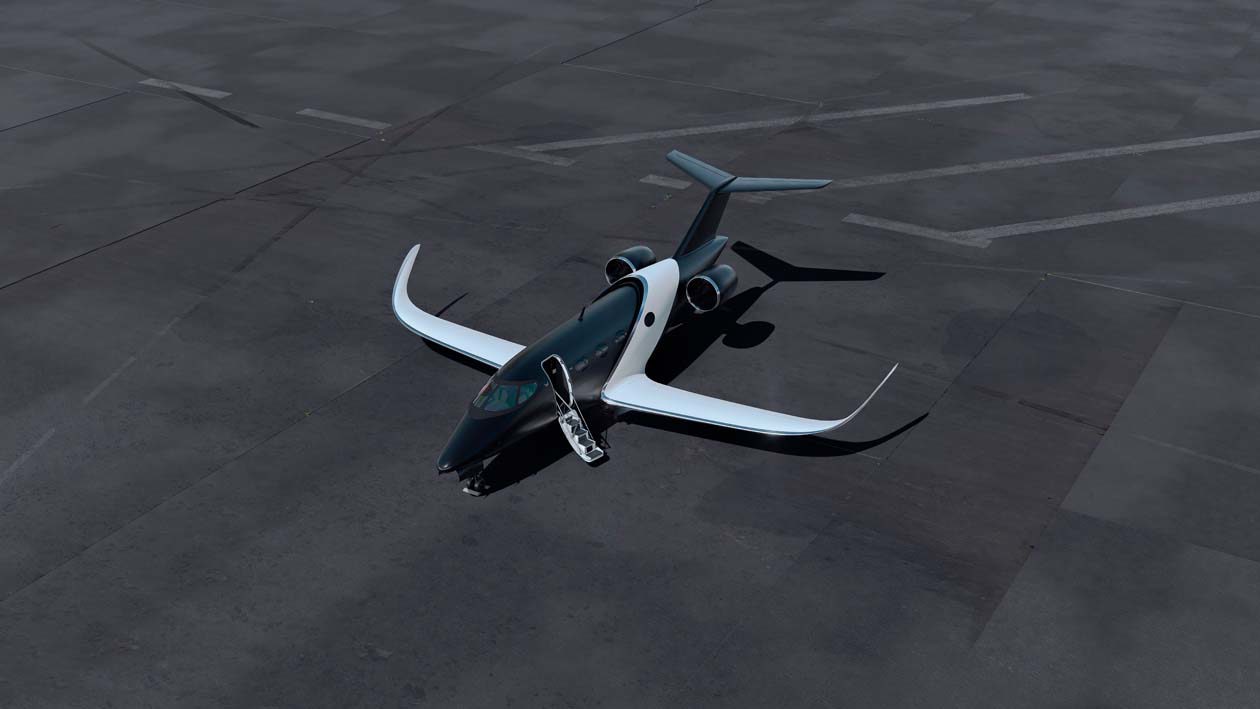29 October 2024
Beyond Aero's first hydrogen-powered electric Business Jet
The business jet is called "One" and is designed to carry 6 to 8 passengers over a distance of 800 nautical miles (1,500 km) and is expected to enter the market by 2030
Beyond Aero raises a total capital of $44 million to electrify aviation with hydrogen propulsion. Beyond Aero, a pioneer in hydrogen-powered electric aviation, has announced the success of its Series A funding round, securing an additional $20 million. Jointly led by Giant Ventures and Bpifrance (the French Sovereign Wealth Fund) via the Deeptech 2030 fund, this round brings the total capital raised by the company to $44 million, including debt and grants. Other investors in this round include Initialized Capital, along with Airbnb and Dropbox founders Nate Blecharczyk (co-founder of Airbnb) and Arash Ferdowsi (co-founder of Dropbox), as well as Olympic champion Nikola Karabatić and World Cup winner Raphael Varane through venture capital fund Teampact Ventures.

One, Beyond Aero's first hydrogen-powered electric business jet Copyright © Beyond Aero Press Office
Founded to meet the challenges of climate change, Beyond Aero is developing the first hydrogen-electric jet business. The company aims to make electric aviation, starting with business aviation, the segment that produces the most emissions per passenger, with ten times more CO₂ per person than commercial flights, under increasing attention.

One, Beyond Aero's first hydrogen-powered electric business jet Copyright © Beyond Aero Press Office
Beyond Aero has achieved significant technical milestones in recent months, delivering the first fully electric manned hydrogen flight in France earlier this year and appointing Luiz Oliveira, a former consultant for Embraer's hybrid hydrogen program, as Chief Engineer. The company has secured $914 million in LOI for 108 aircraft and has earned various accolades, including Brilliant Minds and the World Economic Forum's Sustainable Aviation Challenge, by joining the First Movers Coalition.

One, Beyond Aero's first hydrogen-powered electric business jet Copyright © Beyond Aero Press Office
Beyond Aero's aircraft, called One, is designed to carry 6 to 8 passengers over a distance of 800 nautical miles (1,500 km) and is expected to enter the market by 2030. Beyond Aero is redesigning the architecture of a CS23 aircraft from scratch, optimizing it for hydrogen electric propulsion. The aircraft will be powered by fuel cells, which will produce water as a by-product and offer five times the range of a battery-powered aircraft. Early adopters include wealthy individuals, entrepreneurs, celebrities, and athletes. Corporate customers such as airlines, charter flight operators, and corporate flight departments have also shown strong interest, signaling the growing demand for hydrogen electric aviation solutions.

One, Beyond Aero's first hydrogen-powered electric business jet Copyright © Beyond Aero Press Office
With offices in Toulouse, Paris and Los Angeles, the startup Beyond Aero has a team of more than 50 highly qualified engineers from leading aerospace companies and is actively recruiting another 40 professionals. The company has secured $914 million in Letters of Intent (LOIs) for 108 aircraft and is a member of the World Economic Forum's First Movers Coalition and the Alliance for Zero Emission Aviation, underscoring its commitment to the electrification of aviation through hydrogen propulsion.
You might be interested in
Business & General aviation

Jets
Aero 2025: a record-breaking edition for the general aviation fair
The presence of the business aviation sector is strong, with the largest European exhibition of corporate jets. The brand new Business Aviation Dome (a transparent space of 2,000 m²) has enhanced the innovations of the sector, offering an immersive...
Business & General aviation

Jets
Dassault's Falcon 8X speeds through Melbourne
The long-haul trijet with extra-large cabin was presented at the Avalon Air Show; Dassault is a key player in Dassault's strategy for the Asia-Pacific market, flanked by the Falcon 6X and 10X models
Business & General aviation

Jets
Beyond Aero's BYA-1 jet
The next-generation hydrogen-electric light jet takes a decisive step towards certification, with major engineering innovations and sports a perfect balance between classic design and innovation









